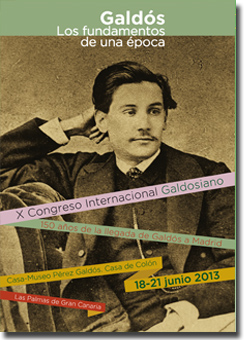EL SENTIMIENTO TRÁGICO DE LA HISTORIA EN 'EL TERROR DE 1824' DE GALDÓS / THE TRAGIC FEELING OF THE HISTORY IN 'EL TERROR DE 1824' OF GALDÓS
Palabras clave:
Episodios Nacionales, Década ominosa, Riego, SarmientoResumen
En El terror de 1824, Episodio que inaugura la Década ominosa del reinado de Fernando VII, evoca Galdós la represión contra los liberales centrada en dos víctimas paradigmáticas: una histórica, el general Riego, héroe de la revolución, y otra novelesca, el maestro de escuela Francisco Sarmiento, ya conocido por los lectores de los Episodios anteriores, concernientes al período del Trienio Constitucional. El estudio aborda el tratamiento que el autor concede a los dos personajes, contraponiendo su comportamiento en las horas previas a su muerte trágica, un doble resultado sobre el que se asienta la construcción de un relato cimentado en una serie de duplicidades reales y simbólicas, a la vez que suscita unos interrogantes sobre las razones que impulsaron al novelista para desmerecer al sujeto de la realidad histórica y engrandecer, por el contrario, al de la ficción.
In El terror de 1824 (The Horror of 1824), an episode that inaugurates the Década ominosa («Dreadful Decade») during Fernando VII´s reign, Galdós recalls the repression against the liberals. It focuses on two paradigmatic victims: the first one, General Riego, a hero of the revolution, is historic while the second one, a school teacher called Francisco Sarmiento, is purely fictional. The last one is a well known character by the reader of the previous episodes, which deal with the Constitutional three-year period. My paper focuses on the author´s development of the two characters, comparing their behaviour the hours before their tragic death. This becomes a double result which is the base for the construction of a narration characterized by real and symbolic duplicities. It also makes some questions arise to explain the reasons that motivated the author´s despise of the historic character and his aggrandizement of the fictitious one.




